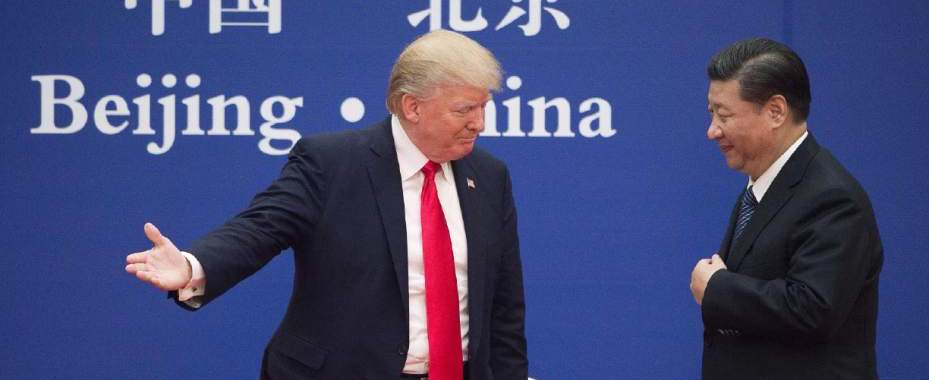Economist Paul Krugman predicted a global recession after President Trump was elected. He was wrong. Most economists predicted a British recession after the Brexit vote. They were wrong. Economists and journalists are now predicting dire economic consequences from Trump’s tariffs on China. In several months, we will see that they are wrong too.
Op-ed originally appeared in The Hill on April 10, 2018
Last Thursday, President Trump told reporters:
“We don’t have a trade war. We’ve lost the trade war because for many years, whether it’s Clinton or the Bushes, Obama, all of our presidents before, for some reason it just got worse and worse. And now it’s $500 billion in deficits and a theft of $300 billion in intellectual property. So you can’t have this.”
The president understated his case. Yes, we have a big global trade deficit, it has cost millions of jobs, and China’s share is by far the largest with any country. Yes, China’s brazen technology theft is jaw-dropping. But the bigger story may be that we are already a natural resource colony for China as well as a quaint tourist destination.
A short economic history of imperialism is in order.
Britain’s imperial expansion was driven by a desire to generate overseas wealth that the Spanish and Portuguese empires had acquired. London established colonies in North America, Africa and the Asian subcontinent in the 18th and 19th centuries.
Alongside the governmental control that Britain exerted over its colonies, it effectively controlled their economies, too.
Colonists imported more than they exported, so the balance of trade favored London. But the composition of trade was even more important than the balance of trade.
Pax Britannica was financed by colonies sending raw materials to England and buying manufactured goods in return. Britain was not only the world superpower, it was the “workshop of the world” in the 19th century.
The Hamiltonian mercantilism of America’s first century allowed us to develop major industries behind tariff walls shielding our industries from eradication by stronger European competitors. The 20th century saw the United States displace our former British overlords as a geopolitical and a manufacturing superpower.
Our vast natural resources were processed into manufactured goods for sale domestically and, residually, to the world. America’s middle class was built upon production and wages, with tariffs and then unionization providing a boost to shared wealth. In recent decades, however, we have squandered that wealth and our economic lead through free trade.
Our belief in free trade was naive — especially with countries like China that have implemented nationalist economic strategies. Indeed, China sold America $375 billion more in 2017 than we sold them — the opposite of what former President Bill Clinton promised in 2000 when he advocated for China joining the World Trade Organization (WTO).
An examination of U.S. trade flows through North American Industry Classification System (NAICS) data reveals that America’s trade profile now resembles that of a third-world colony. We sell natural resources and tourism services to our Chinese economic overlords so that they can add value and sell us more advanced manufactured products.
The U.S. runs a $24-billion trade surplus in agriculture and mining products with China. But we have a $400-billion net deficit in higher-value manufactured goods. In other words, our commodity surplus is a mere 6 percent of our manufacturing debt with China.
Digging into the actual product categories is more revealing. For example, the largest single category of U.S. exports to China is “agricultural products,” worth a net surplus of $15.3 billion last year. After that, there’s $6.8 billion worth of “oil and gas,” which China uses to power its industry. There’s also $5.5 billion of “waste and scrap” that America sells to China.
All of that plastic and metal does indeed come back to the U.S. in the form of much higher-value products. America’s largest single product category of imports from China is a net $167.3 billion worth of “computer and electronic products.”
The next-largest product category of net imports is $40 billion worth of “electrical equipment, appliances and components” that we also buy from the People’s Republic.
Economists often champion the fact that the U.S. is becoming a service economy and has a trade surplus in services with China. But the sad fact is that 57 percent of our service industry exports to China in 2017 was tourism.
In other words, when wealthy Chinese travel to Disney World and stay in hotels, their spending is considered a tourism service export. Unfortunately, tourism jobs land on the low end of the pay scale.
The point is that the United States already has an economic relationship with China, and it resembles that of a colony. President Trump is right to confront Beijing’s industrial policies, which are designed to make China the next global superpower.
The president’s pivot from naive U.S. free trade toward more strategic trade should be cheered, not obstructed. Inaction or capitulation to Beijing’s brutish trade behavior will only consign America to the status of an economic colony to Asian industrial powers, providing raw materials to fuel their growth.
Providing a fun and cheap tourist destination for their upwardly mobile middle class can’t provide the basis for rebuilding the American middle class.
Note: Referenced data can be found here.
Michael Stumo is CEO of the Coalition for a Prosperous America, an organization that advocates on behalf of U.S. manufacturing, agriculture and labor.













